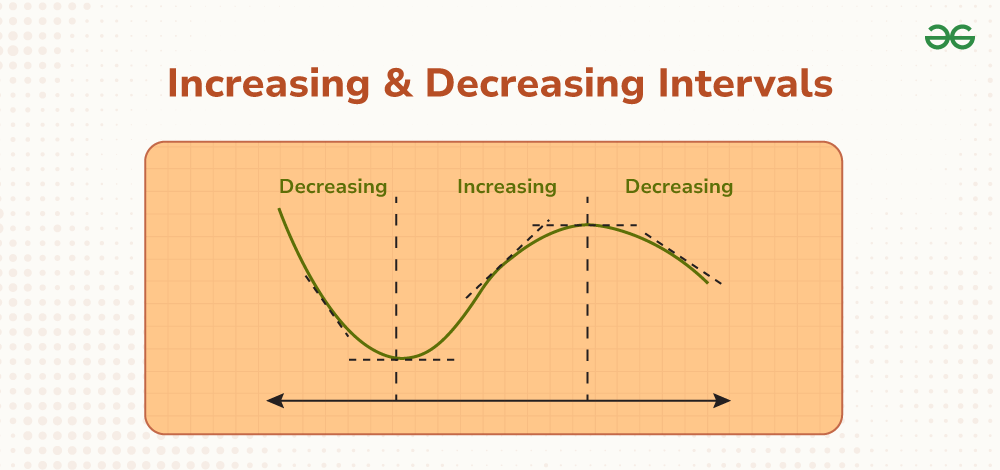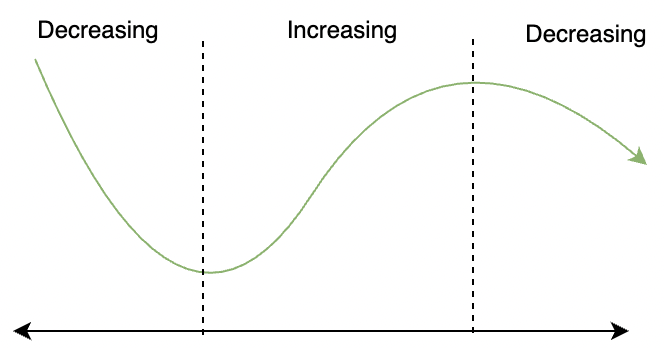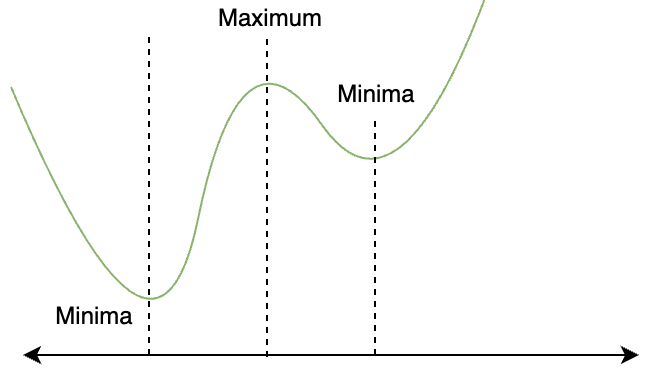
|
|
Increasing and decreasing intervals are the intervals of real numbers in which real-valued functions are increasing and decreasing respectively. The Derivatives are the way of measuring the rate of change of a variable.  Increasing and Decreasing Intervals When it comes to functions and calculus, derivatives give us a lot of information about the function’s shape and its graph. They give information about the regions where the function is increasing or decreasing. Derivatives are also useful in finding out the maximum and minimum values attained by a function. A function’s graph when plotted through the information collected from derivatives can help us find out the limit and other information about the function’s behavior. What is Increasing and Decreasing IntervalThe interval of region will increase if the value of the function f(x) increases with an increase in the value of x and it will decrease if f(x) decreases with a decrease in x. This information can be used to find out the intervals or the regions where the function is increasing or decreasing. Once such intervals are known, it is not very difficult to figure out the valleys and hills in the function’s graph. The figure below shows a function f(x) and its intervals where it increases and decreases.
Increasing and Decreasing IntervalsThe concept behind Increasing and Decreasing Intervals is to identify these areas without looking at the function’s graph. For this, let’s look at the derivatives of the function in these regions. The fact that these derivatives are nothing but the slope of tangents at this curve is already established. The figure below shows the slopes of the tangents at different points on this curve.  Increasing Intervals  Decreasing Intervals Notice that in the regions where the function is decreasing, the slope of curve is actually negative and positive for the regions where the function is increasing. The slope at peaks and valleys is zero. So, to say formally.
Must Read Critical PointCritical Point is a point where derivative of the function becomes zero. In the previous diagram notice how when the function goes from decreasing to increasing or from increasing to decreasing. There is a valley or a peak. These valleys and peaks are extreme points of the function, and thus they are called extrema. >It is pretty evident from the figure that at these points the derivative of the function becomes zero. The function attains its minimum and maximum values at these points.
In the figure above, there are three extremes, two of them are minima, but there are only one global maximum and global minima. So in formal terms,
Identify Increasing and Decreasing Intervals It becomes clear from the above figures that every extrema of the function is a point where its derivative changes sign. That is function either goes from increasing to decreasing or vice versa. While looking for regions where the function is increasing or decreasing, it becomes essential to look around the extremes. For any function f(x) and a given interval, the following steps need to be followed for finding out these intervals:
Let’s look at some sample problems related to these concepts. Sample Problems on Increasing and Decreasing IntervalsQuestion 1: For the given function, tell whether it’s increasing or decreasing in the region [-1,1] f(x) = ex Solution:
Question 2: For the given function, tell whether it’s increasing or decreasing in the region [2,4] f(x) = x2 – x – 4 Solution:
Question 3: Find the regions where the given function is increasing or decreasing. f(x) = 3x + 4 Solution:
Question 4: Find the regions where the given function is increasing or decreasing. f(x) = x2 + 4x + 4 Solution:
Question 5: Find the regions where the given function is increasing or decreasing. f(x) = x2 + 3x Solution:
Question 6: Find the regions where the given function is increasing or decreasing. f(x) = ex + e-x Solution:
|
Reffered: https://www.geeksforgeeks.org
| Class 12 |
Type: | Geek |
Category: | Coding |
Sub Category: | Tutorial |
Uploaded by: | Admin |
Views: | 8 |

